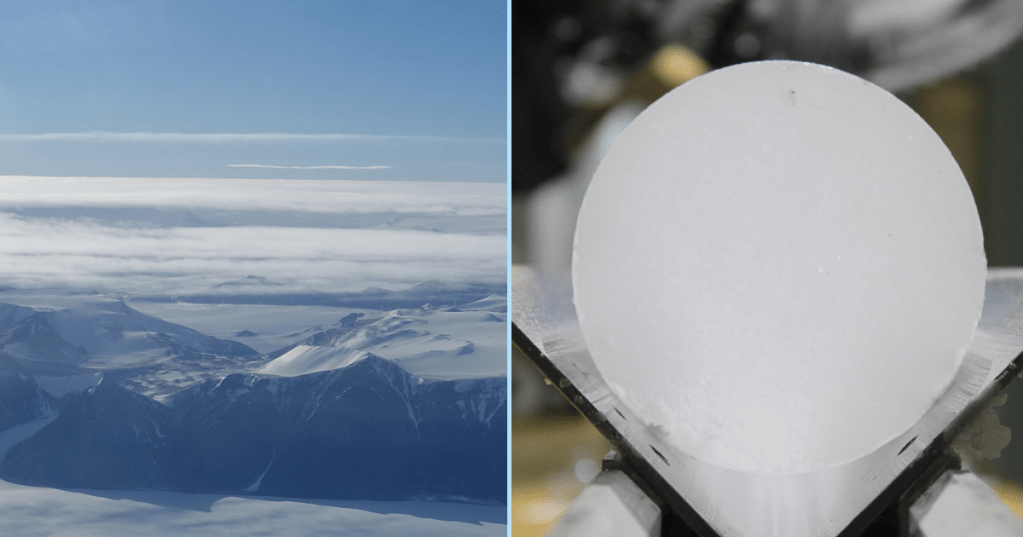It can be hard to comprehend just how old the planet it is for our puny human brains, and even tougher to imagine what the planet might have looked and felt like millions of years before humans evolved.
This core taken from the Antarctic ice can provide some possible answers, though, and what it has to tell us about the planet’s ancient atmosphere is pretty interesting.
The ice core sample is dated to around five million years ago, during the Pliocene epoch, and the researchers who studied it published their thoughts in The Cryosphere.
Image Credit: Wikimedia Commons
Both global temperatures and carbon dioxide levels were higher at the time, and analyzing exactly how the atmosphere might have changed allows scientists to make predictions about how it might shift in the future as well.
Until now, a lack of ice older than about 800,000 years has hindered their progress.
“The lack of ice older than one million years old severely limits our direct paleoclimate record and creates uncertainties when modeling future climate predictions which include modeled configuration of the past Antarctica Ice Sheet.”
They’re particularly excited about this sample from the Pliocene, which is seen as analogous for our current anthropogenic warming phase.
Image Credit: Creative Commons
They found what they were looking for in the Ong Valley, located in the Transantarctic mountains.
The “debris-rich ice core” measured 944 centimeters in length and contained two separate layers. One was around 2.95 millions years old and the other dated between 4.3 and 5.1 million years old.
To determine these ages, researchers analyzed cosmogenic nuclide concentrations, which are rare isotopes produced by cosmic rays interacting with surface rocks. Doing so allows scientists to calculate how long material has been buried.
The two layers correspond not only to the Pliocene epoch, but to two global glaciations that occurred during the period. The later event, which took place between 4.8 and 4.9 million years ago, was followed by a period in which global temperatures exceeded those of today.
Image Credit: Creative Commons
Scientists believe studying this period could provide vital clues as to how rising emissions and temperatures are likely to affect the planet in the coming years.
“Collectively our results show that the continental ice sheet advanced into the Ong Valley repeatedly, and evidence of at least two such advances at 2.95 and 4.3-5.1 million years ago.”
A deeper analysis will be needed before additional information can be discovered but for now, the age alone is reason to celebrate.
